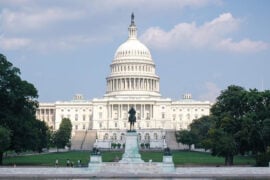In brief
Tax equity financing transactions have become an increasingly popular way to provide a higher rate of return for outside investors and to help developers monetize an otherwise cost prohibitive project. In a recent Tax Court decision, Olsen v. Commissioner, T.C. Memo. 2021-41 (6 April 2021), the taxpayers invested in such a venture, but the result was a complete disallowance of all tax benefits because the investment was simply too good to be true and (according to the Department of Justice) a tax shelter. For individual taxpayers in particular, this case is an effective lesson on how not to structure investments in energy equipment transactions.
Background
The petitioners in Olsen were part of a group of more than 200 participants in a solar power investment plan, which a US district court held was a tax shelter and against which the court issued a permanent injunction to prevent future marketing of such transactions. See United States v. RaPower-3, LLC, 343 F. Supp. 3d 1115 (D. Utah 2018), aff’d. 960 F.3d 1240 (10th Cir. 2020). But it was the Tax Court that ultimately determined the tax consequences of the transactions. On 6 April 2021, the Tax Court ruled that the petitioners in Olsen were not entitled to any deductions and tax credits claimed as part of the solar energy transactions. The crux of the Tax Court’s holding was the fact that the solar power project never got beyond the research and development stage.
The facts in Olsen are relatively straightforward. Mr. Johnson formed International Automated Systems, Inc. (IAS), which constructed 19 towers at a testing site in Utah. IAS represented to investors that they could purchase triangular-shaped Fresnel solar lenses, which IAS would install into arrays on the towers to concentrate sunlight and convert the stored energy into electricity. Only one tower, however, was ever fully equipped with lenses. Even that tower produced only small amounts of electricity during testing and commercial production never materialized.
Having failed on its own, IAS marketed to investors, a lucrative opportunity to obtain tax benefits from energy credits and depreciation deductions. The purpose of the investment would be to “zero out” the investors’ tax liability. Enter Mr. and Mrs. Olsen. The Olsens purchased their first solar lenses in 2009. On the advice of counsel, they formed PFO Solar, LLC (“See United States v. RaPower-3, LLC,”), of which Mr. Olsen was the sole member, to be the nominal holder of the lenses. The Olsens then signed an “Equipment Purchase Agreement” with IAS, by which they agreed to purchase USD 60,000 worth of lenses: the payment was structured with USD 18,000 as a down-payment and the remaining balance was due only if the project produced electricity. The Agreement designated LTB, an LLC formed by Mr. Johnson, as responsible for ensuring installation of the lenses, though LTB itself was not a party to the agreement.
The Olsens claimed some tax credits on their 2009 tax return and carried forward the unused balance to 2010. In 2011, they purchased more lenses, this time with LTB acting as a purported “lessee” and with a slightly altered payment structure. Petitioners repeated this process in 2012, 2013, and 2014, purchasing USD 242,000 of lenses in those years. During 2009-2014, Mr. Olsen’s day job was as a law firm associate. At trial, Mr. Olsen admitted that he “occasionally read email updates” on the project, “did not [do] much” with his holding entity PFO Solar, and never actually saw a lens in operation producing electricity. Nevertheless, petitioners claimed depreciation deductions for PFO Solar on Schedule C and investment tax credits under section 48. Petitioners carried forward their claimed tax benefits to succeeding tax years, to the extent allowable depreciation deductions and credits exceeded their taxable income. The IRS disallowed all of these deductions and credits on the basis that the lenses were not used in a trade or business, held for the production of income, or placed in service during the relevant tax year.
The Tax Court sustained the IRS’s disallowance in full based on four considerations: (1) the Olsens were not engaged in a “trade or business”; (2) the Olsens did not hold the property for the “production of income”; (3) the solar lenses were never “placed in service”; and (4) the Olsens’ invest ment was a passive activity.
Trade or Business
Taxpayers typically must be engaged in a trade or business to claim most business expense deductions. In the energy credit space, section 48 investment tax credits are available only for depreciable property. Property is depreciable under section 167 if it satisfies the “trade or business” requirement. A taxpayer engages in a “trade or business” if the taxpayer is involved in the activity “with continuity and regularity” and the “primary purpose” for the activity is to earn profit or income. Commissioner v. Groetzinger, 480 U.S. 23, 35 (1987). The frequency of activities is key, and sporadic activities do not rise to the level of a “trade or business.” See id. at 35. Moreover, managing one’s own investments does not constitute a “trade or business.” See Higgins v. Commissioner, 312 U.S. 212, 216 (1941).
In Olsen, the sum of the petitioners’ activities consisted of: (1) signing documents purporting to lease solar lenses to one of Mr. Johnson’s LLCs; (2) writing checks to IAS and the LLC; and (3) emailing the promoters of the investment transaction. Petitioners formed PFO Solar to “create the appearance of a trade or business,” but did not provide evidence that PFO Solar performed any business activities or had business records, employees, or a bank account. Further, the Tax Court determined that petitioners did not utilize or possess any of the lenses they purchased from IAS and the LLC and could not establish that they engaged in a sale-leaseback transaction that gave rise to a rental trade or business.
Production of Income
Second, tax planners should consider whether the taxpayer will hold the property for the production of income. Under section 167, depreciation deductions are allowed if the taxpayer is either engaged in a trade or business or holds property for the production of income. Section 212 provides taxpayers a deduction for ordinary and necessary expenses incurred “for the production or collection of income.” To meet the “production of income” requirement, the taxpayer must have engaged in activities “with a profit-seeking motive, independent of tax savings.” Collins v. Commissioner, T.C. Memo. 2011-37. To determine whether taxpayers have a profit motive, courts consider: the time and effort the taxpayer devotes to the activity; the manner in which the taxpayer carries it on; the expertise of the taxpayer and his advisors; the taxpayer’s history of income and losses from the activity; any expectation that property used in the activity will appreciate in value; and the financial status of the taxpayer. See Treas. Reg. § 1.183-2(b). If a taxpayer is not engaged in an activity for profit, then deductions are allowed only if they would be allowed regardless of whether the activity was engaged in for profit or if the deductions do not exceed the taxpayer’s gross income from the activity. See section 183.
In Olsen, the Tax Court held that petitioners also failed the “production of income” requirement. The Court noted that the solar lenses generated no income and would generate no future income unless they produced electricity, which was highly unlikely because the project had not progressed past the research and development stage. Further, the Tax Court held that petitioners “had no expectation that the lenses would appreciate in value,” did not request a refund or attempt to “cut [their] losses” when it became clear the lenses would never be profitable, and had substantial income from other sources that would otherwise be zeroed out with the tax benefits from the transaction. Based on these facts, the court found that petitioners purchased the solar lenses primarily to secure tax benefits, not to earn a profit. Because petitioners were not engaged in a trade or business and did not hold the solar lenses for the production of income, they were not entitled to the section 48 investment tax credit.
Placed into Service
The third time was not the charm for petitioners, as they also failed to show the solar lenses were “placed into service.” Property used in a trade or business must be “placed into service” during the year to claim deductions and credits with respect to that the property. See Treas. Reg. § 1.167(a)-10(b); Treas. Reg. § 1.46-3(d)(1)(ii). An asset is “placed in service” when it is “placed in a condition or state of readiness and availability for a specifically assigned function.” Treas. Reg. § 1.167(a)-11(e)(1)(i). If the asset is “an individual component that is designed to operate as a part of a larger system [but] is incapable of contributing to the system in isolation,” the asset “is not regarded as placed in service until the entire system reaches a condition of readiness and availability for its specifically assigned function.” Green Gas Del. Statutory Tr. v. Commissioner, 147 T.C. 1, 52 (2016), aff’d, 903 F.3d 138 (D.C. Cir. 2018).
Applying a five-factor test, the Tax Court rejected petitioners’ argument that the solar lenses were placed into service because they were held out for lease. The court distinguished the lenses from solar hot water heaters that were held to be in a ready condition because lenses are “mere components of a system” (i.e., they can’t operate independently). The court noted that there was no evidence that petitioners’ lenses were ever installed. And even if the lenses had been installed, there was no evidence that they were capable of producing electricity.
Passive Activity
Finally, petitioners forgot a basic rule of tax planning for individuals – passive activity losses and tax credits generally cannot reduce income from “active” activities (e.g., employment income). A “passive activity” includes any activity “in which the taxpayer does not materially participate” and generally includes “any rental activity.” Section 469(c)(1)-(2). A taxpayer is treated as “materially participating” in an activity only if he is involved in its operations on a basis that is “regular,” “continuous,” and “substantial.” Section 469(h)(1).
Petitioners had no passive income during 2010-2014 and thus, even if depreciation deductions were allowed, the losses generated by the deductions would be nondeductible passive losses. See section 469(d)(1). Similarly, because the taxpayer had no regular tax liability allocable to passive activities, any allowable energy credits would be passive activity credits that could not be claimed currently. See section 469(d)(2).
Lessons Learned
The silver lining in Olsen was that because the IRS failed to get written penalty approval the petitioners did not have to pay penalties and interest, which likely would have been substantial because the initial tax benefits were claimed in 2010. As tax equity financing structures become increasingly popular with individual taxpayers, projects such as solar panels or lenses may become common ways to obtain quick tax savings. But before pulling the trigger, taxpayers would be wise to seek counsel to make sure they can jump through the multiple hoops in the Internal Revenue Code before claiming beneficial depreciation deductions and tax credits. Otherwise, taxpayers may find their sought after tax benefits to be like the electricity in Olsen – all theory and no spark.




